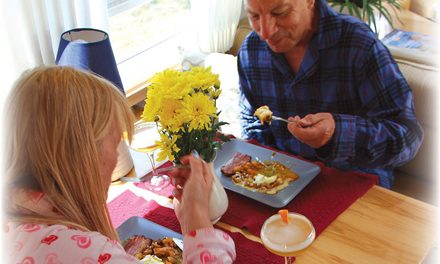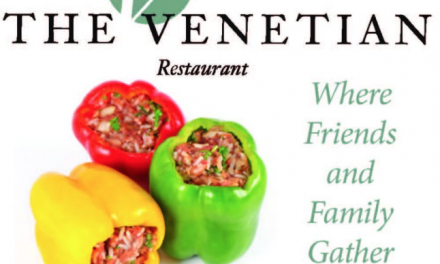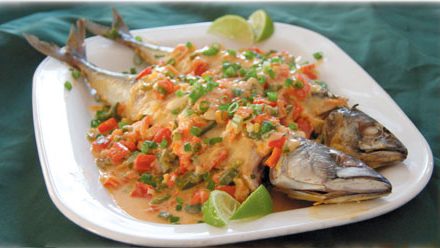By Adam Centamore
It’s hard to think of fat as a healthy food. So much of what we’re shown and taught on television and online claims the exact opposite. Diet fads and questionable research by ‘experts’ aim those trying to eat healthier in new directions seemingly every day. As consumers we’re bombarded with nutritional information as nebulous as it is shifting and changing. Today’s curse on animal fats may be the basis of tomorrow’s ketosis diet. No wonder some people are confused.
If there’s one thing everyone agrees on, however, is that bacon is bad for you, right? All that liquefied, artery-clogging fat that drips off a slab just pulled from the frying pan is prima facie evidence that bacon, despite its unquestionable deliciousness, will eventually kill you. Given bacon’s evil nutritional reputation, it stands to reason any fat from the same animal will subject you to a similar fate, yes?
It turns out that may not really be the case. Where the fat originates in the animal and how the animal is raised can have enormous influence on the healthiness of the fat. There are some hard truths we have to accept, though. Traditional bacon will never be healthy for you, no matter what. With nearly 70% of the calories in a slice of bacon coming from bad fats, it’s really not up for debate. There is, however, a porcine alternative every bit as delicious and a whole lot better for you. A recent Instagram post about a local farm experiment with Lardo inspired me to dig deeper.
Imagine a thin slice of delicate, snow-white pig fat loaded with flavors of herbs and spices. The melt-in-your-mouth texture is rich and almost sweet, a glorious companion to a poached egg or a chunk of rustic bread and a glass of wine. What if this fat had the ability to lower your risk of “bad” cholesterol, and might even be able to reduce your risk of heart disease? That would be pretty sweet. There is such a food. It’s lardo, a charcuterie made in Tuscany for more than two thousand years.
You might be thinking but lardo has the word “lard” in it. What’s the difference? An important distinction needs to be made between “lard” and “lardo”. Lard refers to rendered fat from a pig. Lard comes from the leaf fat surrounding the kidney and is used in place of other fats like oil and butter for cooking.
Made from the back fat of the pig, lardo is cut in a slab that is salted and cured in a cool, dark environment for six to 18 months. This extended period allows the fat to absorb the flavors of the spices and herbs rubbed on the surface. The extensive salting cures the fat and adds flavor as well.
So, can lardo actually be healthy? For that answer, I turn to an expert and eSS&SC friend. Peter Burrows, the owner of Brown Boar Farm in Wells, Vermont, sets the record straight. “The last few generations of Americans have been led to believe that eating pork lard leads to clogged arteries, heart attacks, and strokes.” That is not true, Burrows explains. “Fat from pastured pigs is classified as monounsaturated fat, just like olive oil.” This suggests lardo (and lard) might help regulate insulin levels, lower cholesterol, and even drop blood sugar levels. Not bad for a fat most often incorrectly grouped with margarine and solid shortenings.
The secret is “pasture raised,” which means the animals receive a significant portion of their nutrition from organically managed pasture and stored dried forages and have access to outdoor pastures year-round, stipulations which exceed those needed to call animals simply “100% grass-fed.” This distinction is critical in making lardo. “Pigs must have access to sunlight to synthesize vitamin D and store it in their fatty tissues,” he said. “Animals kept indoors, as in commercial hog-raising operations, have no exposure to sunlight.”
Heritage pigs, like those Brown Boar Farms raises, retain traits which allow them to remain outdoors year-round. This increased exposure to weather spurs them to develop thicker back fat. Industrially produced versions lack the benefit of these traits. Furthermore, additives are used which bring us right back to the bad-fat problem. “Unfortunately, store-bought lard is likely to have been hydrogenated to lengthen shelf-life, making it a source of trans fats,” Burrows laments. “Industrial lard processes also commonly includes bleaching, deodorizing agents, and emulsifiers.” Yuck.
High-quality pig fat, whether lard or lardo, is revered for its cooking capabilities and culinary applications. Chefs love lard for the taste and high smoke-point. Bakers love it because it doesn’t melt as quickly as butter, making it great for creating lighter breads and crusts. Lardo is a magnificent addition to charcuterie platters and is delicious on its own. Here’s hoping the farmer’s experiment is a complete success, and we’ll be enjoying delicious locally made Lardo in the near future.
Adam Centamore is a wine & cheese educator and author of “Tasting Wine & Cheese – An Insider’s Guide to Mastering the Principles of Pairing”. He is also a passionate fan of charcuterie…and secretly wishes he could have a pet pig. When he’s not writing or teaching he can be found lurking in local butcher shops picking out chops for dinner.






